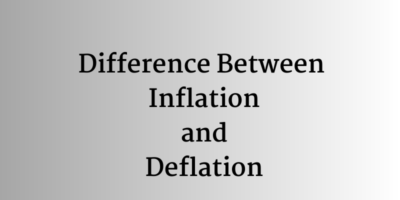What is a Central Bank?

What is a Central Bank? A Central Bank is the institution that is responsible for managing a country’s monetary policy and regulating the financial system. It is typically government-owned and independent of political influence, with a mandate to maintain price stability and support economic growth.
The main functions of a central bank include issuing and managing a country’s currency, setting interest rates and monetary policy to control inflation and stabilize the economy, acting as a lender of last resort to provide liquidity to the banking system during times of financial stress, and regulating and supervising financial institutions to ensure the stability of the financial system.
In most countries, the central bank is the primary institution responsible for implementing monetary policy, with the goal of promoting economic growth and stability. Central banks work closely with other government agencies, such as finance ministries and regulatory bodies, to achieve these goals.
Brief History of Central Banks
The history of central banks can be traced back to the 17th century when the Bank of Sweden (Sveriges Riksbank) was established in 1668. However, the modern concept of a central bank emerged in the 19th century, when the Bank of England was given the authority to regulate the country’s monetary policy in 1844.
Central banks were created to solve the problem of currency instability, which was a common issue during the early days of modern finance. Before the establishment of central banks, governments, and private banks often issued their own currency, which led to frequent fluctuations in the value of money and made trade and commerce difficult.
The establishment of central banks allowed for the creation of a stable currency that could be used across the country, making trade and commerce easier and more efficient. Over time, central banks took on additional roles, including regulating and supervising financial institutions, acting as a lender of last resort during times of financial stress, and managing monetary policy to promote economic growth and stability.
Today, almost every country has its own central bank, with many countries establishing central banks in the 20th century. For example, the Federal Reserve in the United States was created on December 23, 1913, while the European Central Bank was established on June 1, 1998.
What’s the Difference Between a Central Bank and a Commercial Bank?
A central bank and a commercial bank are different because they have distinct roles, functions, and responsibilities.
Firstly, a central bank is typically owned by the government and operates as a government institution, while a commercial bank is owned by private shareholders and operates as a commercial entity.
Secondly, a central bank is responsible for regulating and overseeing the entire financial system of a country, whereas a commercial bank provides financial services to individuals and businesses.
Thirdly, central banks have a critical role in implementing monetary policy and managing the money supply of a country, which is not a role that commercial banks have. Central banks use tools like setting interest rates, regulating banks’ reserve requirements, and buying or selling government securities to influence the money supply, while commercial banks mainly lend money, accept deposits, and manage investments.
Finally, central banks also act as the lender of last resort during times of financial crisis, providing liquidity and stability to the banking system. This is not a role that commercial banks typically perform.
While commercial banks and central banks are both financial institutions that provide services related to money and finance, they differ in terms of their ownership, roles, responsibilities, and functions.
Why are Central Banks Important?
Central banks are important for several reasons:
- Monetary Policy: Central banks play a crucial role in maintaining economic stability by implementing monetary policy. They control the supply of money in the economy, manage interest rates, and set inflation targets. Through these actions, central banks can help to promote economic growth and prevent inflation from spiraling out of control.
- Financial Stability: Central banks act as the lenders of last resort for financial institutions, providing liquidity during times of financial stress. They also regulate and supervise financial institutions to ensure that they operate safely and soundly, which helps to prevent financial crises.
- Currency Stability: Central banks are responsible for maintaining the stability of the country’s currency. They issue and manage the currency and intervene in foreign exchange markets to prevent excessive volatility.
- Government Financing: Central banks can buy government bonds and other securities, which helps governments to finance their operations and projects. This can be particularly important during times of economic crisis or when there is a need for large-scale investment.
- International Cooperation: Central banks play an important role in international cooperation and coordination. They work closely with other central banks and international organizations to promote global financial stability and support economic growth.
Overall, central banks are critical institutions for maintaining economic and financial stability. They help to regulate the financial system, manage monetary policy, and promote economic growth, which benefits both individuals and the wider economy.
Disadvantages of Central Banking
Although Central Banks are important and they are responsible for controlling the money supply, managing the economy, and supervising financial institutions. They also have their disadvantages as well, and they are:
- Lack of accountability: Central banks are often independent and not directly accountable to elected officials or the general public. This can lead to a lack of transparency and accountability.
- Economic inequality: Central banks can exacerbate economic inequality by favoring large financial institutions and wealthy individuals in their policies.
- Political pressure: Central banks may be subject to political pressure and can be influenced by government officials or other interest groups. This can lead to policies that are not in the best interests of the economy as a whole.
Examples of Major Central Banks
There are many Central banks around the world each of which serves a particular country or regional economic area. Below is an example of the 10 Top Central banks in the world.
- Federal Reserve System (Fed) – United States ($8.8 Trillion)
- Bank of Japan (BOJ) – Japan ($5.9 Trillion)
- People’s Bank of China (PBOC) – China ($5.3 Trillion)
- Deutsche Bundesbank ($2.7 Trillion)
- Swiss National Bank (SNB) – Switzerland ($1.2 Trillion)
- Bank of England (BOE) – United Kingdom ($1.1 Trillion)
- Reserve Bank of India (RBI) – India ($820 Billion)
- Central Bank of Brazil – Brazil ($740 Billion)
- Reserve Bank of Australia (RBA) – Australia ($600 Billion)
- Bank of Canada (BOC) – Canada ($410 Billion)
There are currently over 200 central banks operating around the world. Some of these central banks are fully independent, while others operate under government control. The responsibilities and functions of each central bank can vary depending on the country’s economic system and financial policies. While there are many central banks, they all play a vital role in regulating their respective economies and maintaining monetary stability.



